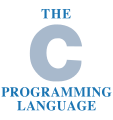The original concept of relational databases was introduced with the publication of “A Relational Model of Data for Large Shared Databanks” in 1970 by Dr. E.F.Codd. The SQL language itself was originally created by Donald Chamberlin and Raymond Boyce at IBM based on Codd’s model in the early 70s. Originally called SEQUEL (Structrued English Query Language), it was designed to be used with IBM’s RDBMS System R. It was later renamed to SQL due to a trademark on the original name held by an aircraft company.
In 1979 Relational Software, Inc., now known as Oracle, used the concepts created by Chamberlin and Boyce in the first commercially available implementation of SQL. Introduced as Oracle V2 for VAX computers, it was ahead of IBM’s System/38 computer by a few weeks. It was later also used in SQL/DS and DB2. SQL would later go on to become the dominant query language for most relational databases including Microsoft’s SQL Server, MySQL, and many others, cementing it in technology history as the primary engine for most databases throughout the next several decades.



